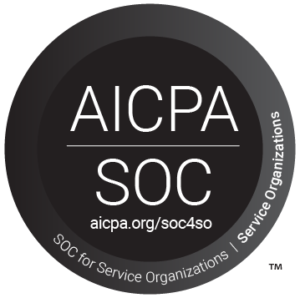Potential Impact Through the Lens of a Fund Administrator
Last month, the U.S. Securities and Exchange Commission (SEC) released a 341-page proposal outlining a number of new proposed rules and requirements for private fund managers. This came on the heels of proposed amendments to Form PF, a private fund Risk Alert, and an open meeting focused on additional private fund matters. Needless to say, the regulator is focused on private fund managers.
Why the Attention?
The SEC seems to be concentrating on a handful of perceived conflicts of interest:
- Opaqueness in fees and expenses – The SEC noted that fees and expenses are often subject to complicated calculation methodologies (including offsets, waivers, etc.), and are described in overly broad disclosures. They seem to also be focused heavily on portfolio company-related expenses, and their ability to reduce investor ROI.
- Calculation of fund performance – The SEC is concerned that the lack of standardization in the calculation of fund performance muddies the comparison to industry benchmarks or across an investor’s portfolio. Specifically, there is a large concern around the inclusion of subscription lines of credit.
- Side letters and preferential terms – The SEC is afraid that the lack of transparency into side letter or other similar arrangements can create a material disadvantage for smaller investors.
- Portfolio company-related conflicts of interest – The regulator is more broadly focused on portco-related conflicts, including board seats not negotiated at arms-length, unfair allocation of portco allocations across funds, etc.
What Does the SEC Want?
The SEC is proposing five primary changes:
- A requirement for private fund managers to prepare and disseminate quarterly statements, the content of which is quite prescriptive.
- A private fund audit requirement, effectively removing the optionality baked into the existing custody rule.
- A requirement to obtain a fairness opinion in connection with certain adviser-led secondaries.
- Prohibitions on certain activities of fund managers, including ERAs.
- A requirement for written documentation of an annual compliance reviews for RIAs.
If you are an exempt reporting adviser with the SEC (i.e. VC funds), you only need to be concerned with #4 (for now). The rest of the proposed rules apply explicitly to private fund managers who are registered investment advisers. With that said, there are open questions seeking comment concerning expanding the other rules to apply to a broader set of advisers, including ERAs, so if you are exempt from registration, you should watch this space to see how it shakes out.
What Does This Really Mean?
Nothing yet because it’s all still in proposal. But, if adopted, some of these proposed changes will have a tangible impact on certain existing processes and procedures for managers and administrators.
Right now, there aren’t any mandated standards for forms of reporting or performance calculations, but there are certainly best practices. Since there is currently no standard, managers (or their administrators) can adopt any format they want as long as it doesn’t violate the fund’s governing docs. Funds that do have administrators should ask their admins how easy it will be to present the new required information on their capital account statements. For the most part, the quarterly statement requirement will just require information that currently lives across multiple forms of report to be consolidated into a single statement. But for audited funds, or funds with institutional-grade admins and reporting, most of this is already happening. There are certain technical complexities which will be raised if the rules are adopted as written, specifically:
- Carried interest – There is quite a bit of variability in terms of how funds and fund admins show carried interest in fund reporting. Some statements lump carry into other items of income and expenses, while other break it out.
- IRR and MOIC – The proposed definitions aren’t different from industry standard today, however they lack prescription around things like the use of leverage or the timing of recording cash contributions (i.e. on the due date or on the date the contributions are actually paid in). Moving to a true “standard” would require the SEC to be more granular with these definitions. Also, the new rules would require performance to be shown since inception in each quarterly statement, including net and gross IRR and MOIC, all cash inflows and outflows, and NAV. Institutional-grade admins should already be doing this (Vector certainly is), but this is not standard for all fund admins – many capital account statements only report for the current period or year.
- Calculation of fees – The SEC proposal includes a question for comment around the potential prohibition on calculating fees on committed capital – and potentially requiring the base to be invested capital, NAV or similar. This could potentially incentivize managers to deploy capital as fast as possible. This would also be a large departure from the industry standard for illiquid fund managers.
- Portfolio company ownership and compensation – Most fund administrators won’t have current portco ownership information. This would require managers and admins to be in regular communication with portfolio companies to obtain cap tables – a administratively burdensome task and one that is a big ask from angel investments.
- Exclusion of subscription lines of credit – Yikes. The proposed rules would require all performance metrics be shown as if the private fund called investors capital, rather than drawing down on fund-level subscription facilities. This will materially impact existing calculations, methodologies, and disclosures – a very big lift for all internal teams and fund administrators.
- Prohibitions – The proposed prohibited activities – charging accelerated monitoring fees, regulatory fees, nonpro-rata allocations, borrowing from private fund clients, preferential treatment of investors related to liquidity or transparency, among others – apply to all private fund managers, including exempt reporting advisers and state-registrants. There is a prohibition on reducing the amount of any adviser clawback by the amount of certain taxes, which would be onerous.
- GIPS – These rules signal a growing trend towards standardization, and particularly GIPS compliance within the private markets space more broadly. GIPS has picked up steam in the past couple years within alternative investments due to revised standards in 2020, GIPS performance calculation requirements for funds using placement agents (FINRA 20-21), demands from institutional LPS (particularly in private credit and real estate) and the revised marketing rule. An industry-wide transition to GIPS will take time and competency – and materially impact fund administration processes at large. More to come on that.
All in all, funds need to make sure their internal teams or outsourced administrators have the know-how to report efficiently and with the current best practices. Using an institutional-grade administrator provides a greater probability that the team will understand those best practices and trends, and will future-proof a fund’s reporting processes.
The proposed rules are open for comment until April 11, 2022. Once adopted, funds will have one year from the adoption date to come in compliance. Keep an eye out for additional content once we see the final rules.
About Vector
Vector AIS is a next-generation fund administrator and technology company for closed-end investment funds.
Join the team, become a client, or follow us as we execute our mission.




